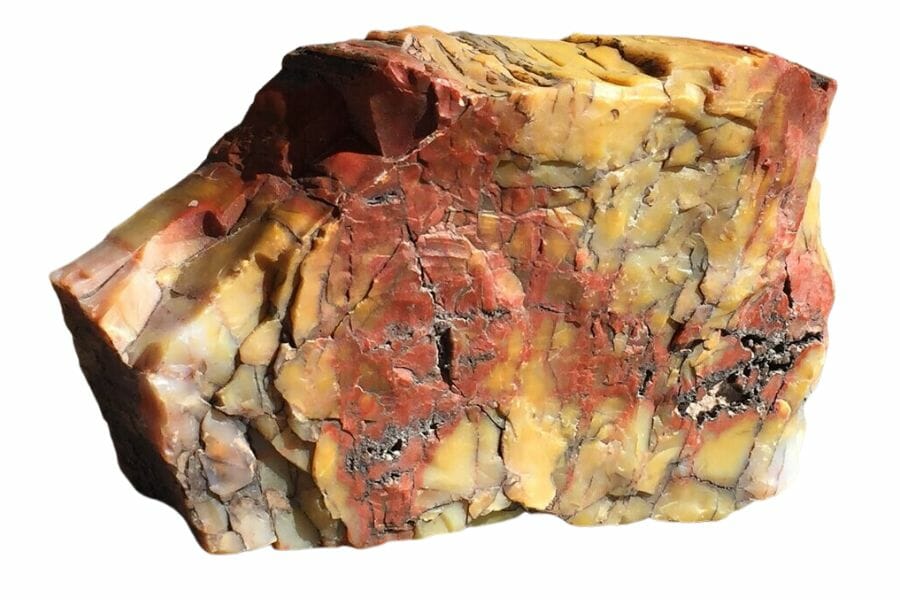Millions of years ago, Arizona’s desert landscape was a very different place. Parts of it were covered by vast seas, while other areas were lush and green, teeming with life. Arizona fossils tell us stories of creatures that once roamed this land.
As you explore the diverse terrains, from mountains to valleys, you can almost feel the excitement of discovering a piece of history right beneath your feet.
Whether you’re an experienced rockhound or just someone with a keen interest, the thrill of unearthing a fossil is unmatched. Every find is a step closer to piecing together the grand puzzle of Earth’s history.
The Fossils Of Arizona You Can Find
From the fossils of giant reptiles to tiny sea creatures, the state offers a window into a bygone era. You can find a variety of these fossils during your explorations. is not just a hobby; it’s an adventure through time!
With every step on Arizona’s diverse terrain, there’s potential to discover traces of life from millions of years ago. The thrill of unearthing a fossil, feeling its texture, and pondering its story is something everyone should experience.
You can also check out our guide to Arizona rockhounding if you want even more spots to find some amazing rocks and minerals.
- The extensive local experience and understanding of our team
- Input from multiple local fossil hunters and fossil groups
- The accessibility of the various locations
- Safety and potential hazards when collecting
- Private and public locations
- A desire to include locations for both experienced fossil lovers and those who are just starting out
Using these weights we think we’ve put together the best list out there for those who love finding great new fossils for our collections!
Common Arizona Fossils
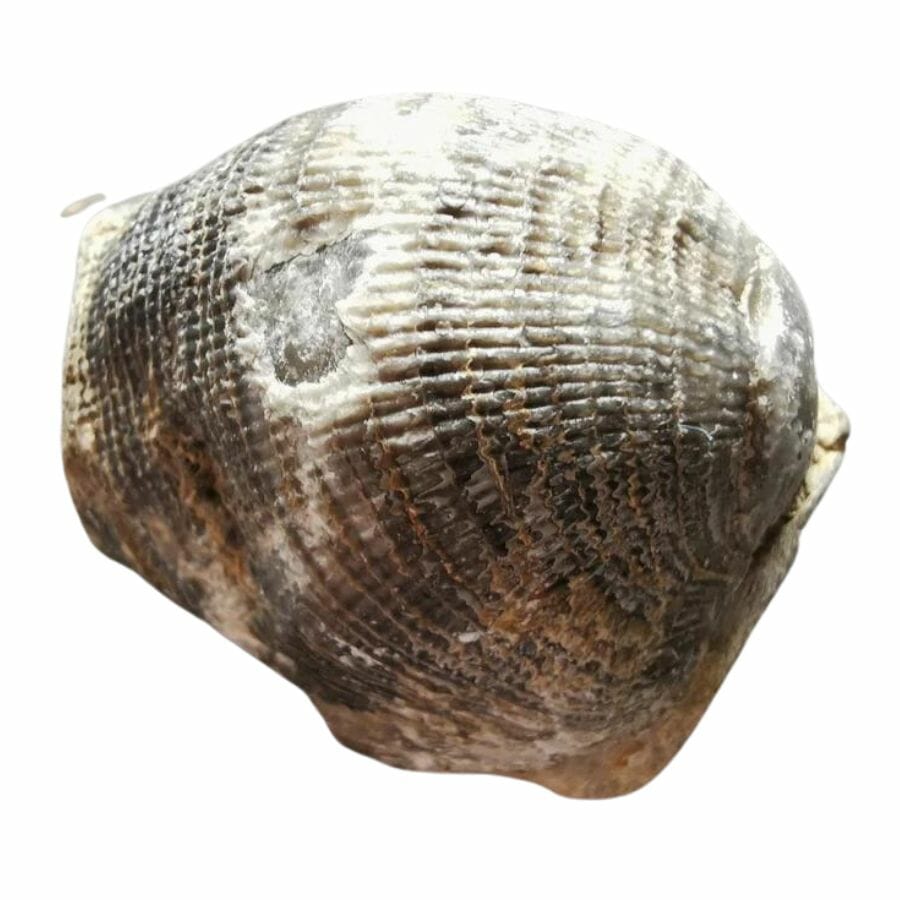
Dive into the rich history hidden beneath Arizona’s surface! Here are the common fossils that you’ll likely find on your explorations:
- Brachiopods
- Crinoids
- Corals
- Trilobites
- Gastropods
- Pelecypods
- Plant fossils
- Mammal fossils
Arizona State Fossil – Petrified Wood
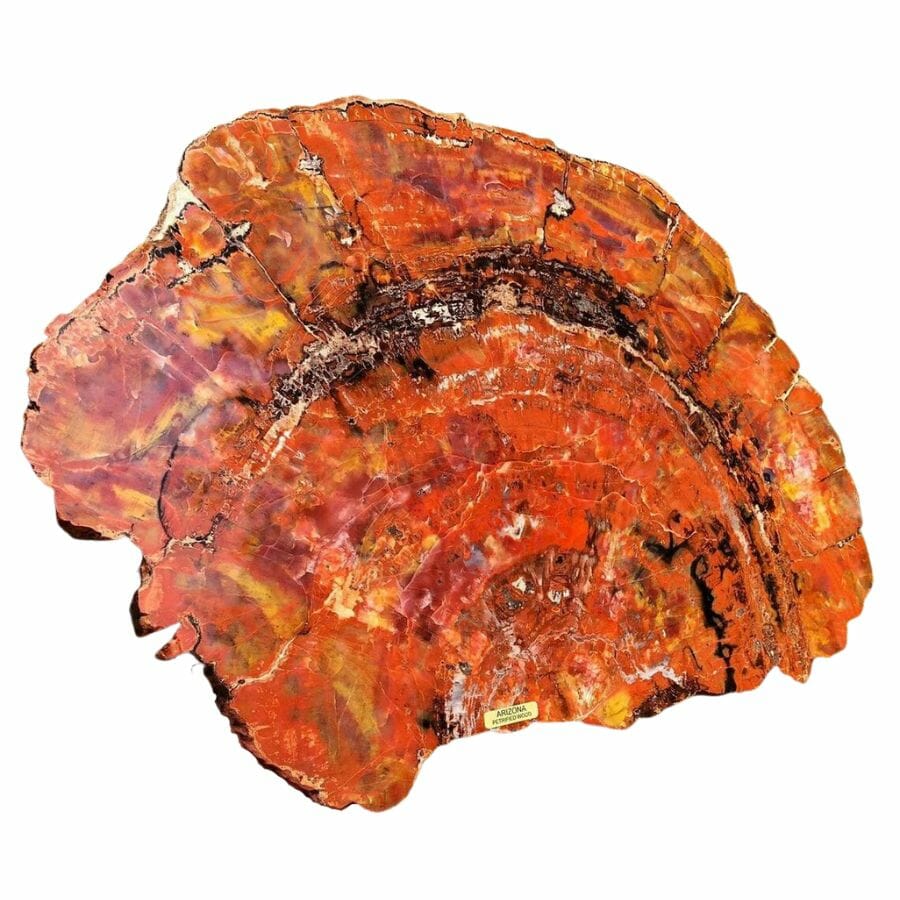
Petrified wood is ancient wood that has turned into stone over time. This happens when a tree gets buried by sediment and the organic material is replaced by minerals, usually silica.
Over a long time, the wood’s cell structure gets preserved, but in a stone form. So, while it looks like wood and even keeps the tree’s original patterns, it’s as hard as rock!
Rare State Fossils
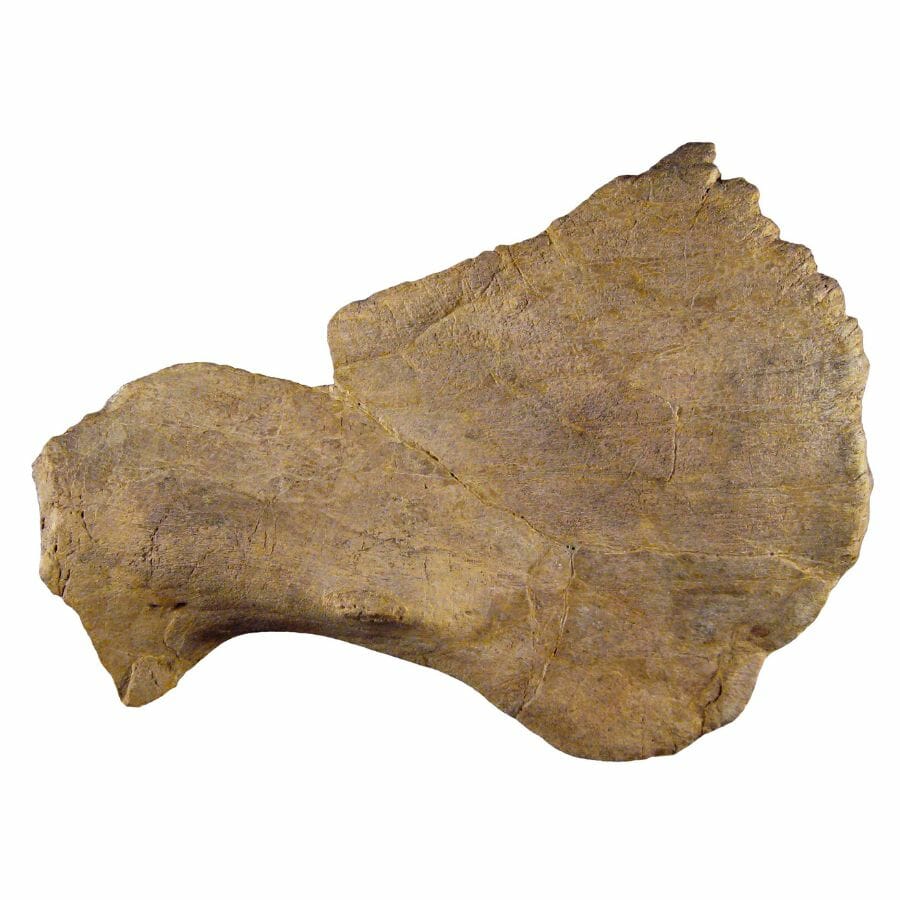
Among the many discoveries, these valuable rare Arizona fossils stand out as some of the most exciting finds:
- Dinosaur footprints
- Dinosaur bones
- Rare fish
The Best Places To Find Fossils In Arizona
Arizona is packed with exciting spots where fossils have been waiting for millions of years to be discovered. Here are the best places to visit.
Always Confirm Access and Collection Rules!
Before heading out to any of the locations on our list you need to confirm access requirements and collection rules for both public and private locations directly with the location. We haven’t personally verified every location and the access requirements and collection rules often change without notice.
Many of the locations we mention will not allow collecting but are still great places for those who love to find beautiful rocks and minerals in the wild without keeping them. We also can’t guarantee you will find anything in these locations since they are constantly changing.
Always get updated information directly from the source ahead of time to ensure responsible rockhounding. If you want even more current options it’s always a good idea to contact local rock and mineral clubs and groups
Grand Canyon National Park

The Grand Canyon National Park showcases a vast canyon carved by the Colorado River and spans about 277 miles long, up to 18 miles wide, and over a mile deep.
While the Grand Canyon is known for its breathtaking views, many also venture there for fossil hunting Arizona experiences.
This colossal landmark is a geologist’s dream. As you look at the canyon walls, you’re seeing layers upon layers of Earth’s history stacked up like pages in a book. Each layer tells a tale of a different time period, from ancient seas to vast deserts.
The terrain of the park varies from rugged cliffs to peaceful plateaus. The varied colors of the rocks, from reds to browns to greens, paint a vibrant picture of our planet’s past.
Getting to Grand Canyon National Park is a breeze. It’s well-connected by major highways and has several visitor centers. Once you’re there, a range of trails, both easy and challenging, await exploration.
Whether you’re a rock lover or just someone who appreciates stunning landscapes, this park is a must-visit!
Where to find fossils in Grand Canyon National Park
Within the Grand Canyon National Park’s vast rock layers, you can find traces of marine creatures like trilobites, brachiopods, and corals that once lived in ancient seas.
As you hike or explore, especially in the Bright Angel Trail, you’ll encounter common Arizona fossils from a time when this area was underwater.
You can also check out areas within the park like the Tapeats Sandstone, Bright Angel Shale, Muav Limestone, and more.
DON'T MISS OUT ON ANY GREAT FINDS!
While you're out searching for Fossils you're going to find A LOT of other interesting rocks and minerals along the way. The last thing you want to do is toss out something really interesting or valuable. It can be easy to misidentify things without a little guidance.
We've put together a fantastic field guide that makes identifying 140 of the most interesting and valuable rocks and minerals you will find REALLY EASY. It's simple to use, really durable, and will allow you to identify just about any rock and mineral you come across. Make sure you bring it along on your hunt!
Moenkopi Dinosaur Tracks
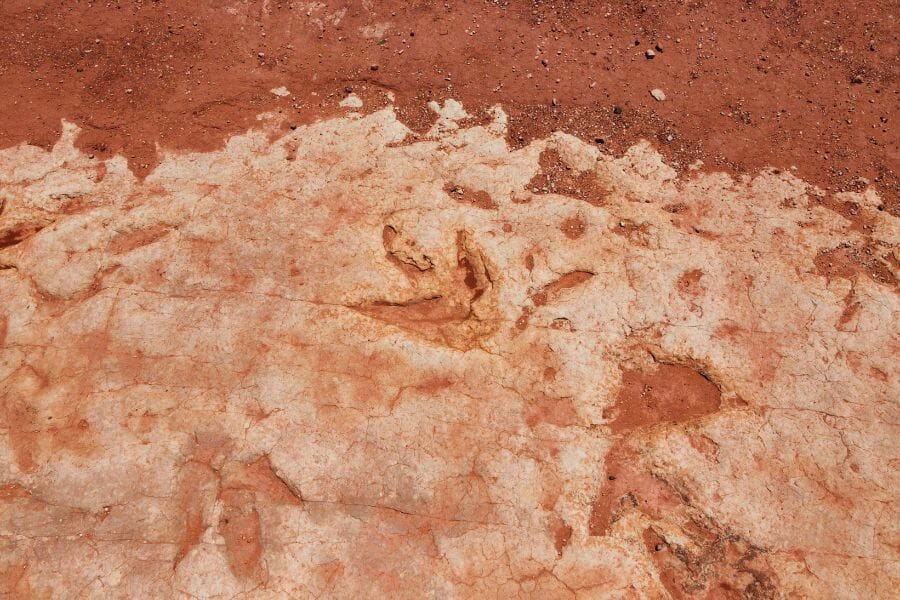
Located near the town of Tuba City, the Moenkopi Dinosaur Tracks take you on a journey back in time, showcasing the footprints of ancient dinosaurs.
The terrain here is open and mostly flat, making it easy to spot the distinct imprints left by these prehistoric giants.
The tracks are found in the red-brown Moenkopi sandstone, which stands out against the surrounding landscape.
This area gives a fascinating glimpse into the geology and history of the region. The Moenkopi formation itself is very old, dating back over 200 million years. It’s an outdoor museum, displaying the movements of creatures from the Triassic period.
You’ll be able to easily find your way to the Moenkopi Dinosaur. It’s accessible by road, and there are clear signs directing visitors to the site.
Once there, you can take a self-guided tour, or even better, local guides are often available to share their knowledge. This place is a real treat for both seasoned rockhounds and curious beginners!
Where to find fossils in Moenkopi Dinosaur Tracks
Only 70 miles from Flagstaff in Tuba City, right within the Navajo Nation, you’ll find the remarkable Moenkopi Dinosaur Tracks. The tracks are imprinted in the rock, and they showcase a variety of different dinosaur species.
Petrified Forest National Park
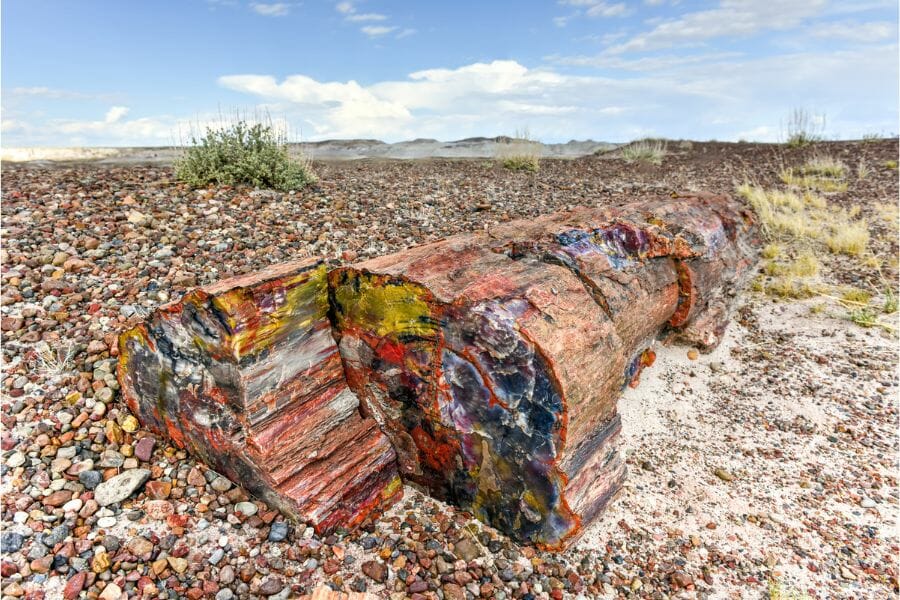
Petrified Forest National Park in Arizona is a captivating spot where nature showcases its artistry. Located in northeastern Arizona, this park stretches over 230 square miles, displaying a vibrant landscape dotted with colorful petrified wood.
This wood turned to stone millions of years ago, and now shines in hues of red, orange, and purple, a stark contrast to the surrounding terrain.
In Petrified Forest National Park, you can have an unforgettable fossil hunting Arizona adventure amid stunning landscapes.
The landscape here is a mix of semi-desert shrub steppe and highly eroded badlands, making it both beautiful and intriguing.
The geology of the park is a rich tapestry of ancient environments, showing evidence of old rivers, lakes, and floodplains. These conditions helped preserve the fallen trees, turning them into the stone logs we see today.
Getting to Petrified Forest National Park is pretty straightforward. It’s well-connected by highways, particularly the I-40, making it accessible for travelers. Once you’re inside the park, there’s a range of trails and viewpoints to explore.
Whether you’re a rock enthusiast or just someone who loves unique landscapes, this park promises a memorable experience!
Where to find fossils in Petrified Forest National Park
Within the boundaries of the Petrified Forest National Park, you can discover plant and animal fossils of Arizona from the Triassic Period, going back over 200 million years.
As you explore, you’ll find remnants of large trees, ferns, and various creatures that lived millions of years ago preserved in stone.
Indian Gardens Paleo Site
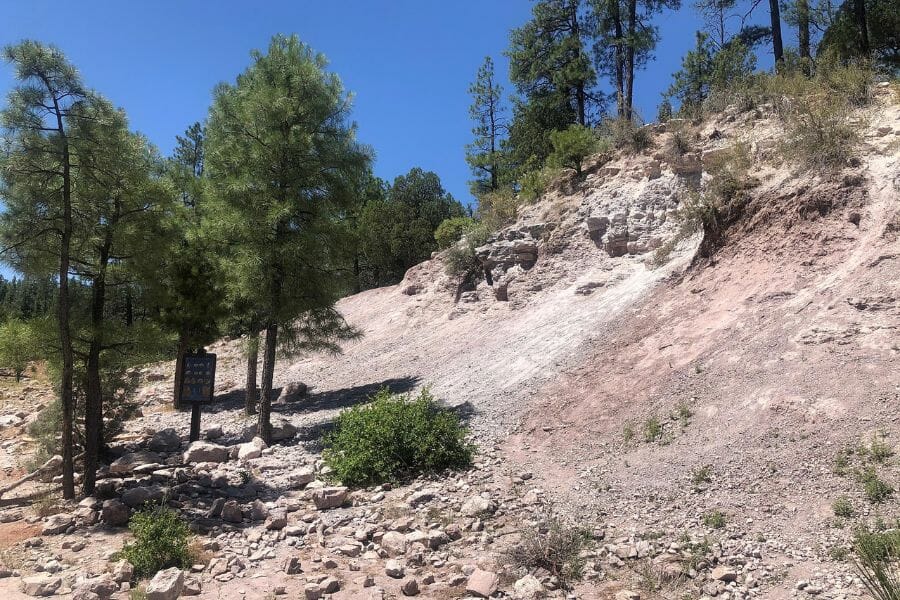
The Indian Gardens Paleo Site in Arizona is an amazing place where the past meets the present. Nestled within the beautiful landscapes of the state, this site offers a peek into the world of ancient life.
Geographically, it’s situated in a region characterized by striking rock formations and captivating desert vistas. The terrain here is rugged but incredibly scenic, with layers of rock revealing stories from ages gone by.
The geology of Indian Gardens is a testament to time, showcasing layers upon layers of sediment and, with it, a record of the ancient organisms that once called this place home.
From prehistoric plants to ancient marine life, the fossils found here show a snapshot of the environments that existed millions of years ago.
Reaching the Indian Gardens Paleo Site is a journey in itself. While it’s positioned in a remote area, there are clear paths and signs that guide visitors.
With a bit of preparation and a keen sense of adventure, anyone can access this remarkable site and marvel at the wonders of Arizona’s geological history.
Where to find fossils in Indian Gardens Paleo Site
In the Indian Gardens Paleo Site, you’ll find an array of Arizona fossils that tell the tale of when this region was submerged. Fossils of seashells, kelp, and other aquatic creatures dominate the landscape, giving a clear picture of an underwater world.
Pima County
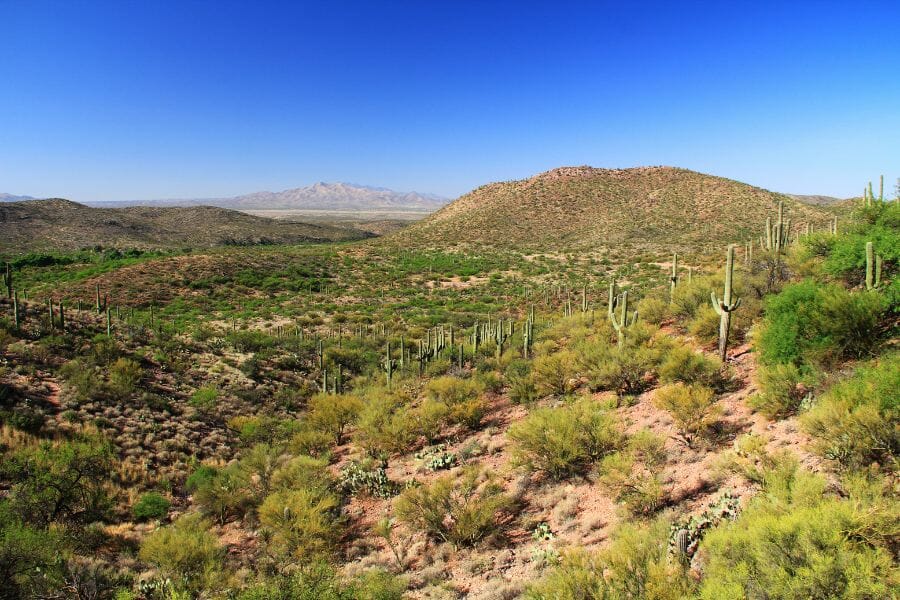
Pima County in Arizona is a vast and varied region full of natural wonders. Located in the south-central part of the state, it stretches across a mix of desert landscapes and mountain ranges.
The terrain is a blend of the flat Sonoran Desert, dotted with iconic saguaro cacti, and the rising peaks of the Santa Catalina and Rincon Mountains.
These diverse features make Pima County a haven for rock enthusiasts, showcasing layers of Earth’s history through its rock formations and mineral deposits.
Geologically, the county is rich, with evidence of volcanic activity, ancient riverbeds, and tectonic movements. These geological events have crafted the unique landscapes and vistas that draw many visitors each year.
Traveling to Pima County is easy. Major highways like the I-10 run directly through, making it accessible from various parts of Arizona and neighboring states.
Where to find fossils in Pima County
In areas like the Redington site at Bingham Ranch, there have been discoveries of various marine fossils. Head to the Empire Mountains and Santa Rita Mountains to find traces of creatures like trilobites, brachiopods, and corals.
And if you’re lucky, you might even stumble upon some rare Arizona fossils around the county, such as dinosaur bones!
Other Top Places To Find Arizona Fossils By Region
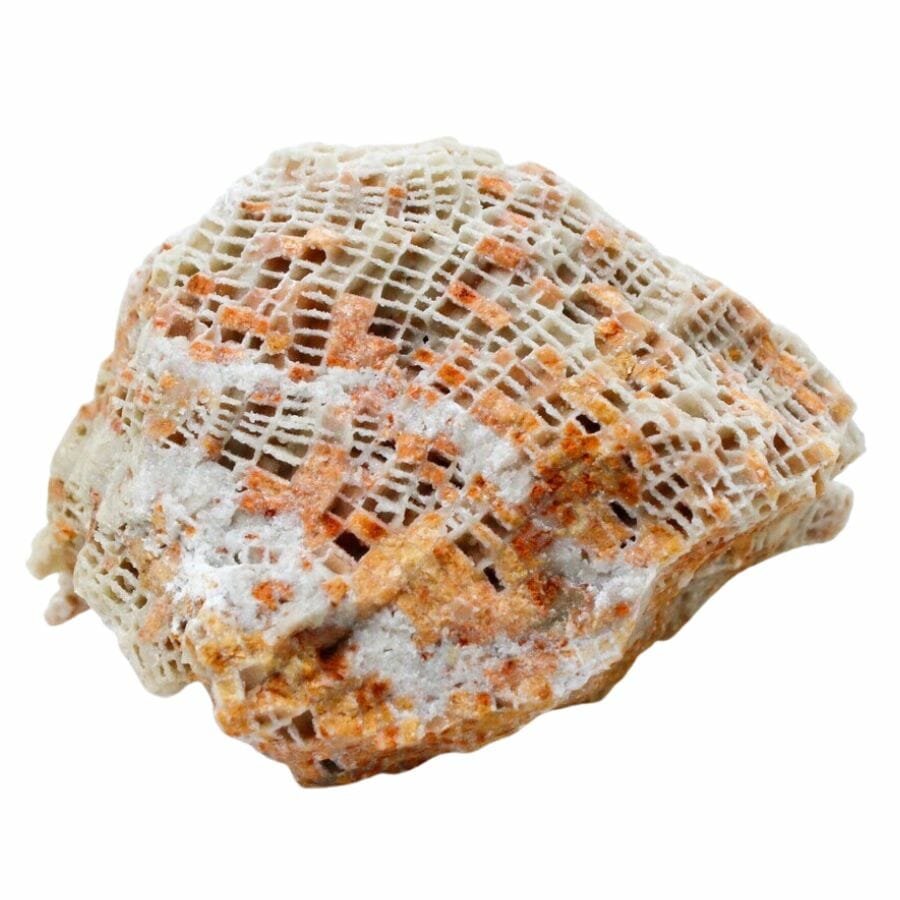
Beyond the popular sites, there are plenty of other locations brimming with fascinating fossils in Arizona. Let’s dive into a list of these exciting spots to explore!
| Location | Fossils |
| Cameron, Apache County | Crocodiles, dinosaur footprints, reptile footprints |
| Ganado, Apache County | Ichthyodectes, petrified wood, Heterodontosuchus, Metoposaurus, Placerias, Palaeoctonus, Unio |
| Meteor Crater, Apache County | Reptile footprints |
| St Johns, Apache County | Schizodus, Placerias, Eupelor |
| Steamboat, Apache County | Brachiopods, mollusks, Ichthyodectes, plants, Gryphaea, Exogyra |
| Bisbee, Cochise County | Brachiopods, protozoa, echinoid spines, corals, bryozoa, Linguella, Schizambon, Obolus, Billingsella, corals, gastropods |
| Curtis Ranch, Cochise County | Mammals-Capromeryx,Cuvieronius,Simonycteris,Stegomastodon |
| Gunnison Hills, Cochise County | Dictyoclostus, Bryozoa, Neospirifer, horn corals, large echinoid spines |
| Mustang Mountains, Cochise County | |
| Lake Mary, Coconino County | Pelecypods, brachiopods, corals, bryozoa, Nuculopsis, Pecten, Doctyoclstus, Marginifera, Nucula, Bellerophon, Allerisma |
| Sedona, Coconino County | Fish fossils |
| Whitehorse Hills, Coconino County | Corals, brachiopods, crinoids |
| East Verde River, Gila County | Corals, brachiopods, crinoids, echinoid spines |
| Globe, Gila County | Fish teeth |
| Kohl Ranch, Gila County | Conularids, gastropods, crinoids |
| Morenci, Graham County | Linguella, brachiopods |
| Safford, Graham County | Gastropods, vertebrates, horses, mastodon, rodents, capybara, sloth, Glyptodon, Dipodomys, Geomys, Sigmodon, Neotoma, Lepus |
| Salt River, Maricopa County | Brachiopods, spirifer, blastoids, Orophocrinus, crinoids |
| Iceberg Canyon, Mohave County | Corals |
| Meadview, Mohave County | Olenellus, Albertella |
| Wikieup, Mohave County | Bassariscus, Anabernicula, Anas, Agriotherium, Alforjas, Anser, Aquila, Branta, Ciconia, Cygnus, Grus, Hemiauchenia, Himantopus, Megatylopus, Neophrontops, Plesiogulo, Prochenia, Prototaxidea, Pseudaelurus, Rallus, Recurvirostra, Sphenophalos, Dinohippus, Procamelus |
| Black Mesa, Navajo County | Lingula, Ostrea, Prionotropis, shark teeth |
| Comb Ridge, Navajo County | Dinosaur bones |
| Holbrook, Navajo County | Vertebrate tracks, vertebrates, plants, petrified logs, ferns, invertebrates |
| Kayenta, Navajo County | Dinosaur bones, petrified wood, Ostrea |
| Tohachi, Navajo County | Ostrea, Modiola, Sphaerium, Planorbis, Vivaparus, turtle |
| Galiuro Mountains, Pinal County | Corals, crinoid fragments, Psephodus teeth, brachiopods, gastropods, blastoids |
| Rodgers Quarry, Pinal County | Hemiauchenia, Megatylopus, Osteoborus, Prochenia |
| Superior, Pinal County | Arthrodire plates, conodonts |
| Black Mesa, Yavapai County | Corals, trilobites, crinoids |
| Jerome, Yavapai County | Cephalopods, brachiopods, corals, large Arthrodire plates to 40cm in length |
| Milk Creek Quarry, Yavapai County | Aelurodon, Hemiauchenia, Michenia, Protolabis |
| Muggins Mountains, Yuma County | Stenomylus, rodent teeth |
Common Questions About Fossil Hunting In Arizona
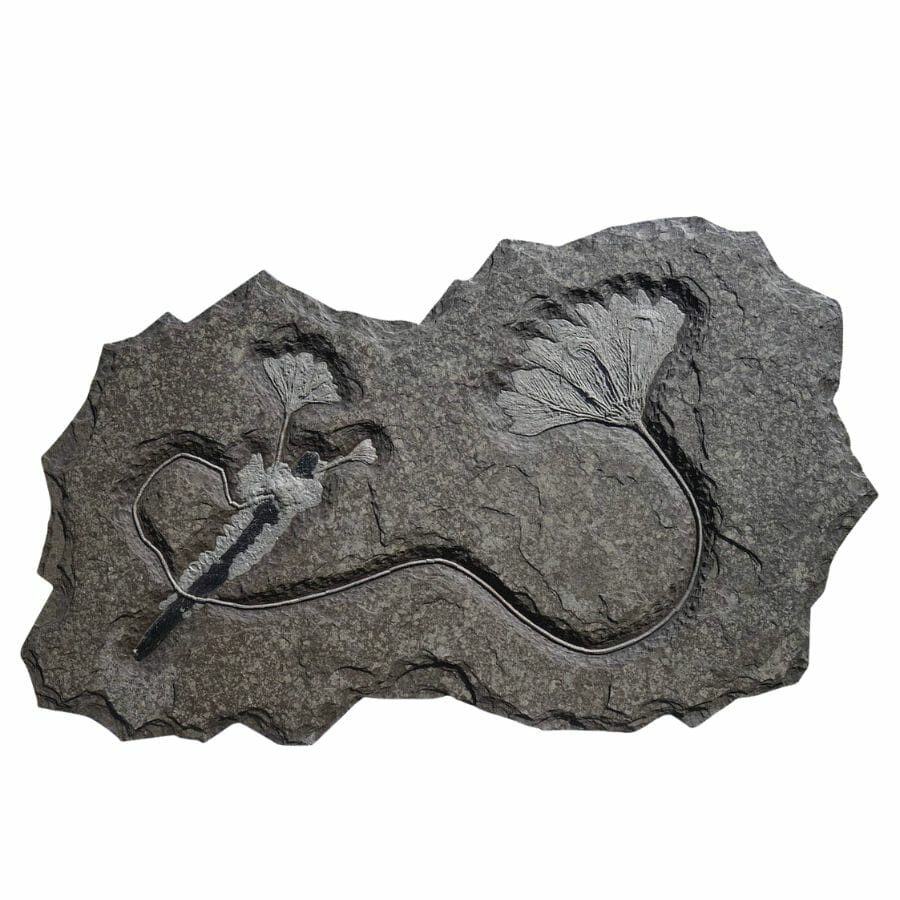
We answer some of the most common questions people ask about fossils in Arizona:
Can you find megaladon teeth or sharks teeth in Arizona?
Arizona, known for its deserts and canyons, was once covered by ancient seas. Because of this, it’s possible to find fossils of sea creatures, including sharks.
However, finding megalodon teeth in Arizona is not common. Megalodon, a gigantic prehistoric shark, mostly lived in areas that are now the Atlantic Ocean and its surrounding seas.
Shark teeth have been found in the state. These are rare Arizona fossils, but they’re usually from smaller, ancient species, not the giant megalodon.
If you’re on the hunt for shark teeth in Arizona, look in places that were once underwater, like limestone and shale layers. Keep in mind, always get permission if you’re searching on private land or in protected areas.
Is it illegal to collect fossils in Arizona?
In Arizona, the rules about collecting fossils depend on where you are and what kind of fossils you’re looking for. On private land, you can collect common Arizona fossils if you have the landowner’s permission.
It’s always a good idea to get that permission in writing to avoid any misunderstandings later.
However, it’s a different story on federal and state lands. Collecting valuable rare Arizona fossils like those from vertebrates (like dinosaur bones or mammal remains) is not allowed without a special permit.
These permits are typically given to trained scientists for research purposes.
On the other hand, you can generally collect common invertebrate and plant fossils of Arizona for personal use on federal lands, as long as they’re not in national parks, monuments, or other specially protected areas.
Always double-check Bureau of Land Management guidelines and the rules of the specific area you’re in.
Some places, like national parks, don’t allow any kind of fossil collecting. It’s super important to respect these rules. They help protect Arizona’s rich natural history for everyone to learn from and enjoy!
Can you find dinosaur bones in Arizona?
You can find a variety of dinosaur bones in Arizona, from the mighty Dilophosaurus to the unique Sarahsaurus.
Then there’s the impressive Sonorasaurus, a massive long-necked giant, alongside the speedy Chindesaurus and the small yet interesting Segisaurus.
If you’re passionate about paleontology or just fascinated by the stories that rocks can tell, Arizona is a fantastic place to explore and learn.
How do you identify the fossils that you find?
First, look at the shape and size. Often, fossils have distinct patterns or features that hint at what they once were, like a leaf’s outline or the curve of a shell.
Next, consider the rock type. Fossils are commonly found in sedimentary rocks because they form from layers of sand, mud, and other materials that once covered living things.
Having a good guidebook on fossils can be super helpful. These books have pictures and descriptions to compare with what you’ve found. Using a magnifying glass can also give you a closer look at tiny details that might be key to identifying your find.
And remember, the area where you found the fossil can give clues. Different regions have different kinds of plants and animals in the past.
Our Favorite Places To Buy Fossils In Arizona
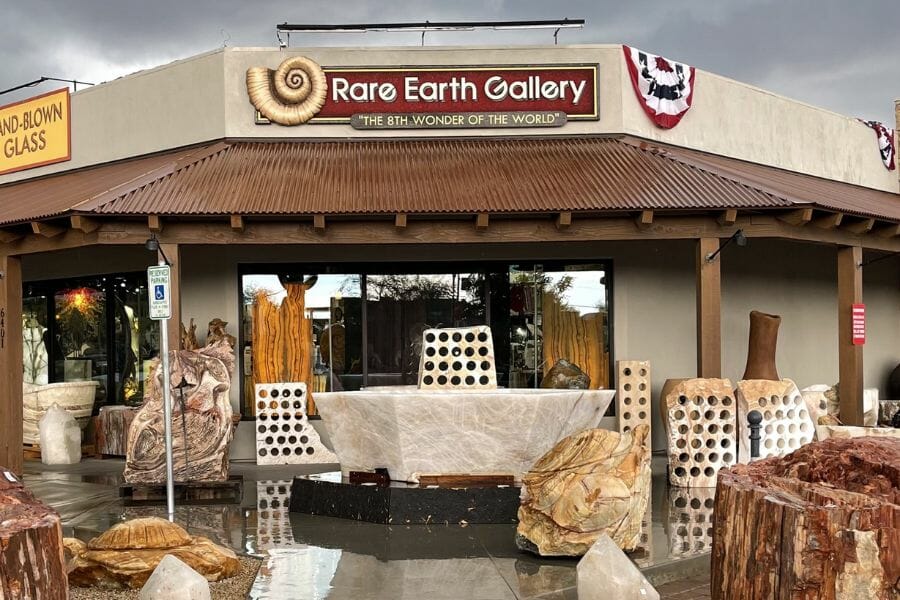
From specialty shops to local markets, the state offers a range of options for both beginners and seasoned collectors. Let’s dive into some of the top spots in the state!
- Rare Earth Gallery – 6401 E Cave Creek Rd, Cave Creek, AZ 85331, United States
- Black Market Minerals – 5000 S Arizona Mills Cir, Tempe, AZ 85282
- Everything Just Rocks – 2235 W 1st St Unit 104-105, Tempe, AZ 85281
- T-Rocks – 1530 W Main St, Quartzsite, AZ 85346
- Arizona Rock Shops – 4107 AZ-68, Golden Valley, AZ 86413
- Miners Rock Shop – 1103 W Fairmont Dr, Tempe, AZ 85282
- Natural Expressions, Inc. – 13802 E Williams Field Rd, Gilbert, AZ 85295
- Stones Crystal Shop – 7085 E 5th Ave, Scottsdale, AZ 85251

